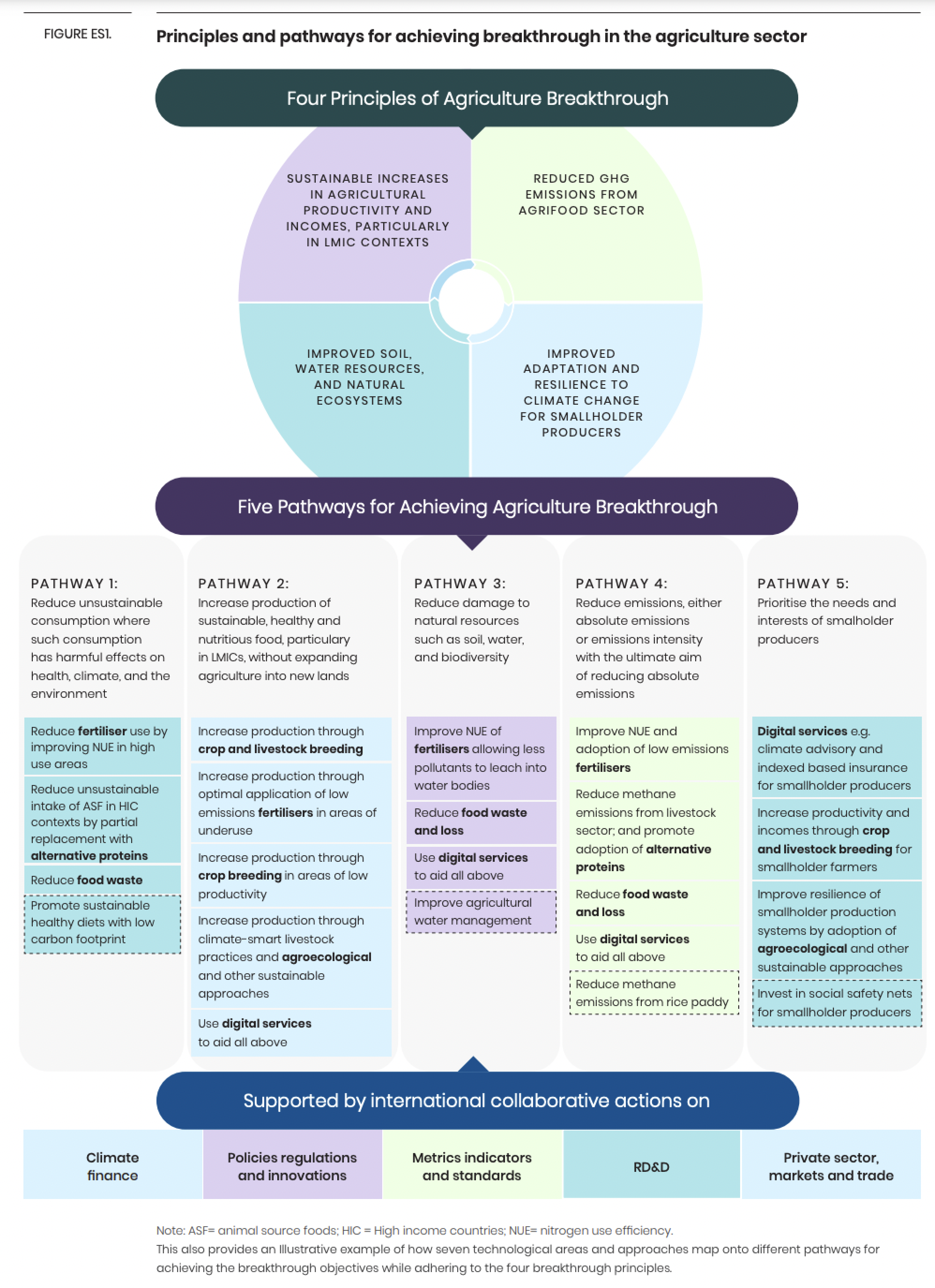Highlights:
The breakthrough objective for the food and agriculture sector is to make climate-resilient, sustainable agriculture the most attractive and widely adopted option for farmers everywhere by 2030 (IEA, 2022).
To minimise the impacts of climate change, it is crucial to stay within the 1.5°C to 2°C temperature goals set by the Paris Agreement. Achieving this requires immediate and deep reductions in emissions across all sectors, including the agrifood sector, which accounts for almost one-third of all GHG emissions (IPCC, 2023c), within a broader framework of just transitions that safeguards the interests of smallholder producers, particularly those in the Global South who are most at risk.
The agrifood sector requires transformative changes (or breakthroughs) to reduce emissions and ensure food and nutrition security without damaging natural resources while also making smallholder producers more climate-resilient. The agriculture chapter of the 2022 Breakthrough Agenda Report (IEA, 2022) identified seven technological areas and approaches to achieve breakthroughs in the agriculture sector.
These seven technological areas and approaches are organised across five pathways.
-
Reducing unsustainable consumption where such consumption has harmful effects on health, climate and the environment. Examples include: alternative proteins to address high meat consumption in high-income countries (HICs); reducing the use of fertilisers and improving nitrogen use efficiency in regions of excess application, by implementing precision fertilisation techniques as well as agroecological and other sustainable approaches; and the use of digital services to help reduce food waste in HICs where such losses are high.
-
Increasing production of healthy and nutritious food without expanding agriculture into new lands and thereby preventing further deforestation. Examples include: appropriate, efficient and low-emission fertilisation technologies in geographies where fertilisers are under-utilised; improving crop and livestock productivity and resilience to climatic shocks so that farmers improve their yields and incomes where these yields are low (e.g., in many LMICs); and digital services to reduce food loss, particularly in LMICs where post-harvest losses are high.
-
Reducing damage to natural resources, such as soil, water and biodiversity. Examples include: adoption of agroecological and other sustainable approaches for food production; appropriate use of fertilisers to reduce pollution due to leaching and run-off; various technologies and approaches, such as climate-smart livestock practices for reducing methane emissions from livestock, that also protect natural resources; and changes in dietary preferences, including alternative proteins that have a lower environmental footprint.
-
Reducing emissions, either absolute emissions or emissions intensity, or a combination of both. Examples include: the adoption of precision fertilisation technologies or low-emission fertilisers; the adoption of technologies and practices that improve livestock efficiency, particularly in LMICs; the adoption of alternative proteins to replace animal-source foods where they are overconsumed; and reducing food loss and waste at all stages of the agricultural value chains.
-
Prioritising the needs and interests of smallholder farmers. Examples include: providing digital and agricultural climate services in the Global South for flood and drought early warning systems; adoption of technologies and approaches suitable for livestock production in the LMICs; or breeding climate-resilient crops for smallholder producers in the Global South.

| Year of publication | |
| Geographic coverage | Global |
| Originally published | 27 Sep 2023 |
| Related organisation(s) | CGIAR - Consortium of International Agricultural Research Centers |
| Knowledge service | Metadata | Global Food and Nutrition Security | AgroecologyClimate extremes and food securityResearch and InnovationSustainable Food Systems | Food loss and wasteClimate-smart agriculturePrecision agricultureProtein consumptionSmallholder agriculture |
| Digital Europa Thesaurus (DET) | fertilisersustainable agriculturelivestock farmingnatural resourcesdigital technologyplant breedingreduction of gas emissions |
